#vilafranca de conflent
Explore tagged Tumblr posts
Text
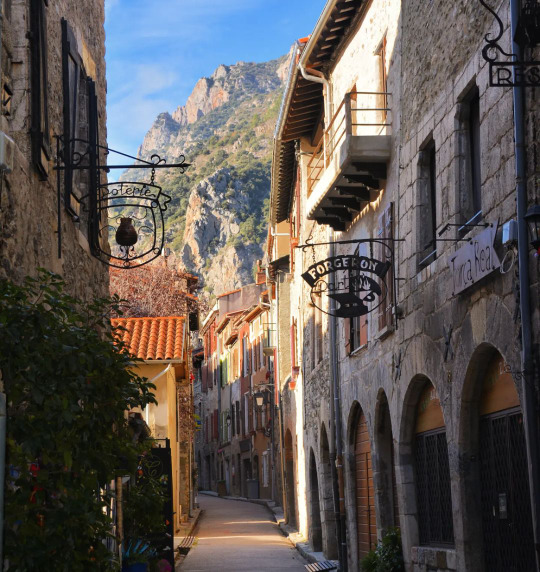
Vilafranca de Conflent, Northern Catalonia.
Photo by imma_alfe on Instagram.
#vilafranca de conflent#catalunya nord#fotografia#travel photography#pays catalan#travel#europe#explore#wanderlust#traveling#beautiful places#old town#historical#aesthetic#landscape photography#landscape#mountains#pyrenees#villefranche-de-conflent
358 notes
·
View notes
Text

Remparts de Villefranche de Conflent
#photographers on tumblr#photographie#photography#architecture#france#pyrénées orientales#pyrénées#sun#medieval#historic aesthetic#historical architecture#villefranche de conflent#canon#vilafranca de conflent
1 note
·
View note
Text





#20210802
El lunes 2 de agosto fuimos a Vilafranca de Conflent. Es un pueblo medieval amurallado en la ruta hacia Perpiñán fundada en el año 1090. Pertenece a la región del Languedoc-Rosellón
On Monday, August 2, we went to Villefranche-de-Conflent. It is a medieval walled town on the route to Perpignan founded in 1090. It belongs to the Languedoc-Roussillon region
Google Translation into French:
Le lundi 2 août, nous sommes allés à Villefranche-de-Conflent. C'est une bastide médiévale sur la route de Perpignan fondée en 1090. Elle appartient à la région Languedoc-Roussillon
Google Translation into German:
Am Montag, 2. August, fuhren wir nach Villefranche-de-Conflent. Es ist ein mittelalterliches Landhaus an der Straße nach Perpignan, das 1090 gegründet wurde. Es gehört zur Region Languedoc-Roussillon
Google Translation into Hebrew:
ביום שני, ה -2 באוגוסט, נסענו לווילפרנצ'ה-דה-קונפלט. זהו בית כפרי מימי הביניים בדרך לפרפיניאן שהוקם בשנת 1090. הוא שייך לאזור Languedoc-Roussillon
Google Translation into Russian:
В понедельник, 2 августа, мы поехали в Вильфранш-де-Конфлан. Это средневековый загородный дом на дороге в Перпиньян, основанный в 1090 году. Он принадлежит к региону Лангедок-Руссильон.
Google Translation into Japanese:
8月2日月曜日、ヴィルフランシュドコンフルントまで車で行きました。 1090年に建てられたペルピニャンへの道にある中世のカントリーハウスです。 ラングドック・ルシヨン地域に属しています
Google Translation into Korean:
8월 2일 월요일, 우리는 빌프랑슈 드 콩플랑(Villefranche-de-Conflent)으로 차를 몰았다. 1090년에 지어진 페르피냥으로 가는 길에 있는 중세 전원 주택입니다. Languedoc-Roussillon 지역에 속합니다.
Google Translation into Arabic:
في يوم الاثنين الثاني من أغسطس ، سافرنا بالسيارة إلى فيلفرانش دي كونفلينت. إنه منزل ريفي من القرون الوسطى على الطريق المؤدي إلى بربينيان ، وقد تم تأسيسه عام 1090. تنتمي إلى منطقة لانغدوك روسيون
Google Translation into Portuguese:
Na segunda-feira, 2 de agosto, dirigimos para Villefranche-de-Conflent. É uma casa de campo medieval na estrada para Perpignan, fundada em 1090. Pertence à região de Languedoc-Roussillon
#VillefrancheDeConflent#Francia#France#Pueblo#Town#Muralla#Wall#Historia#History#Traveler#Beauty#Couple#GoodVibes#PlushiesOfInstagram#WithGalaxy#ペンギ
3 notes
·
View notes
Text
Fort Libèria

La fortalesa que s’alça sobre Vilafranca del Conflent és una de las primeres construccions militars que el rei de França Louis XIV va ordenar bastir als territoris fronterers amb Espanya una vegada va aconseguir sostreure una bona part del territori septentrional del Principat de Catalunya gràcies al Tractat dels Pirineus.
Aquest va ser signat el 1659 a l’illa dels Faisans, al riu Bidasoa, per posar fi a la Guerra dels Trenta Anys. Si més no, a Catalunya es va sumar la Guerra dels Segadors (1640-1652) que va enfrontar bona part de les institucions al rei espanyol Felip IV, que va cedir el territori sense gaires reticències.
L’enfrontament intern va acabar propiciant una cessió dissimulada de les comarques del que ara es coneix com a Catalunya Nord: l’Alta Cerdanya, el Conflent, el Rosselló, el Vallespir i el Capcir, entre d’altres territoris annexes. No va ser fins el 1720 que la incorporació va ser efectiva.
Mentre tant, les forces franceses van posar en marxa la seva maquinària recorrent al mariscal Vauban, una eminència en l’art de la guerra de setge, que va ser l’ideòleg del moment pel que fa a bastir fortificacions i pel que fa a destruir-les.
El 1681 va ser l’any en què Vilafranca del Conflent va ser la plaça escollida per bastir una fortalesa, connectada amb la població per una llarga escala subterrània, segurament propiciada per la gran quantitat de coves que hi ha a prop.
A més a més de donar suport a la ciutat emmurallada, una altra fortalesa ideada per Vauban, la de Mont-Lluís, no estava gaire lluny. I no només això, sinó que el mariscal va fer adequar una cova situada a la muntanya de davant de la vila, la Cova Bastera, per protegir encara més la situació encaixada a la vall del Tet.
La Cova Bastera va ser el refugi de forces catalanes en algun dels intents de recuperar el territori, però les tropes franceses van esclafar la més significativa d’aquestes revoltes i executar els responsables.
A partir de l’adveniment dels Borbons a Espanya, a principis del segle XVIII, i després de la caiguda de Catalunya en mans dels seus exèrcits, la mateixa dinastia regnava a banda i banda dels Pirineus, la qual cosa va fer que Fort Libèria no fos utilitzat només com a fortalesa defensiva sinó més aviat com a caserna i presó.
1 note
·
View note
Photo

El Tren Groc va ser construït fa més de 100 anys. La seva via és d'un metre d'amplada i enllaça Vilafranca de Conflent amb la Tor de Querol - Enveigt (62 km aprox). L'electricitat és submonistrada per un tercer rail. El tren supera un desnivell de 1100 metres i circula a una velocitat màxima de 55 km/hora. (en Font-Romeu Pyrénées 2000)
0 notes
Photo

El Tren Groc camí de #Vilafranca de #Conflent #CatalunyaNord #Villefranche (at Fontpédrouse)
0 notes
Photo

Vilafranca de Conflent by Met Pujol on Flickr.
0 notes
Note
Moltes gràcies!
I guess this message would make more sense in Halloween, but I don't want to wait that long lol. Are there any well known ~haunted places~ in the Catalan Countries?
Yes! There are many legends about haunted places. Most of them can be divided in two groups: ànimes en pena (spirits) and encantades (Moorish ladies under a spell who guard a treasure cave).
1. Ànimes en pena
"Ànima en pena" literally means "soul in sorrow", but it's similar to a ghost. It's the spirit of a person who can't go to the Other Side because they are damned, weren't buried properly or as a result of how they died. This person will look the way they looked on earth (no white blankets here) and sometimes with an added punishments (be on flames, be chased by dogs, can't dismount their horse, riding the skeleton of a horse, etc). Some of them only appear under certain circumstances, like at night. The particular details depend on each legend: depending on the circumstances and how grave their punishment was, they can be a simple spirit or more similar to the Wild Hunt motif.
There are places that are said to be haunted by an ànima en pena. Many of them are just a dead person who asks the living to say a message on their behalf or finish something they left unfinished, and then they can go in peace. But others are damned for eternity. I will explain the most famous one in Catalonia.
The most famous one is Count Arnau (Comte Arnau), also called Count Evil (Comte Mal) in Mallorca. I made a post about him a long time ago, but it's always a good moment to bring him back. Count Arnau (might be the real Arnau de Mataplana) was Medieval noble who committed various sins. Some say he was forced to marry a 7-year-old when he was 15, but he was actually into another woman who was a nun in the monastery of Sant Joan de les Abadesses. Catholic nuns make a vow of chastity, but n'Arnau ignored the holy laws, seduced her and had sex with her. Some versions say that the nun died shortly after joining the monastery, and on a stormy night n'Arnau stole her corpse from the grave and rode away carrying her on his horse, but in his madness he couldn't see where he was going and fell down a cliff. It's also said he did not keep his promises to his feudal subjects and did not pay his servants what he owed them.
For his sins, he was punished to roam eternally as an ànima en pena, riding a black horse on fire and chased by diabolical dogs. Since at least the 16th century, people from the area have been saying they see him on stormy nights.
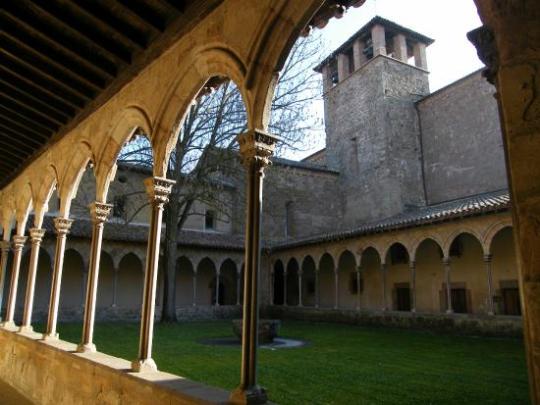
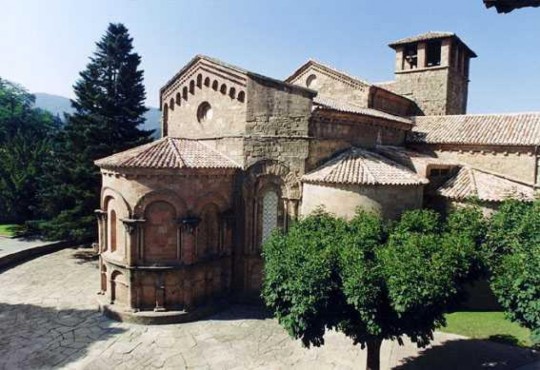
Sant Joan de les Abadesses monastery, Comarques Gironines, Catalonia. x x.
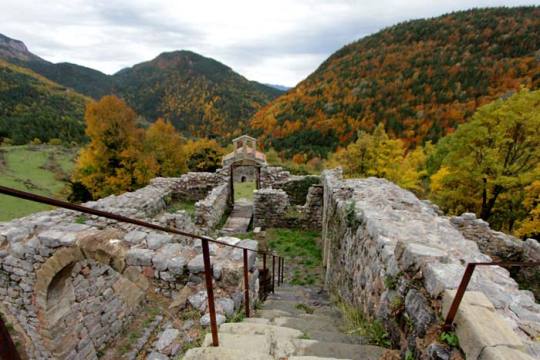
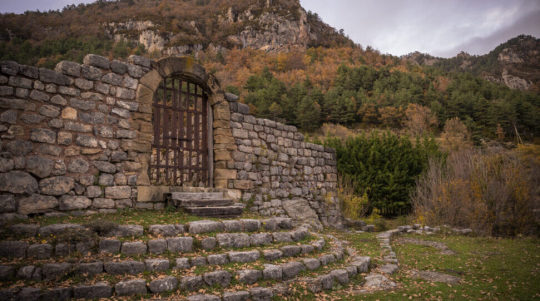
The ruins of Mataplana castle: Count Arnau's castle. Comarques Gironines, Catalonia. x x.
In many other places of Catalonia they have similar legends of the Wild Hunt. Many of them have to do with a nobleman or a hunter who ignored God to go hunt a specially big hare and is now damned to hunt eternally. Or, like in Gréixer, he killed the priest and ran away to the forest, so now he's eternally running in that forest and can't ever stop.

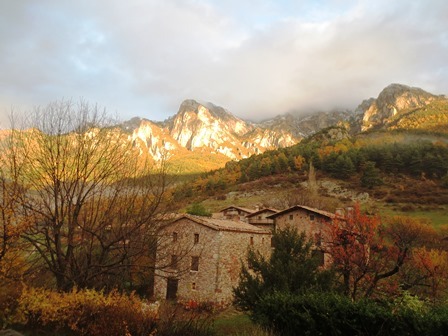
Gréixer, in Guardiola de Berguedà. Where the hunter hid and is now forever running. One example of the many damned hunters. x x.
2. Encantades
The second kind of haunted places are those hunted by an encantada ("enchanted woman"). This is not to be confused with dones d'aigua ("water women"), a being of Catalan mythology who are also called encantades in some areas of the Northern half of Catalonia, which is related but different.
Here I'm talking about the immortal spirits of Moorish women who guard treasures. This kind of legend is very common in the Valencian Country, the south of Catalonia and the Balearic Islands (the areas that were ruled by the Islamic kingdoms for a longer time).

Still from the Disney movie Aladdin.
The legend is always the same: in the Middle Ages, when the Christians conquered this land, the Moors had to run away but they always had the hope that they would come back home. For this reason, they left their riches and treasures hidden (usually in a cave), which is guarded by an enchanted woman, who is immortal until the spell is lifted. Many have tried to find these treasures, but beware: there is always a trick.
This post would never end if I listed every town, cave or small lake that has a legend like this. There are many, and each will have some difference to how the woman was enchanted or what will happen if you steal from it. I will tell three as an example.
This is the legend told of the encantada of Planes: every 100 years, an enchanted Moorish woman leaves her hiding place in the little lake (called Barranc de l'Encantada, "the Enchanted Woman's little lake"), wearing a diadem of pure gold. She will talk to the first farmer she sees working in the nearby fields and ask him "which one do you want to keep: the gold diadem or me?". If the farmer answers the diadem, it means he's greedy so she will kill him. If he chooses her, she will take him to the cave, where he will remain under a spell forever.
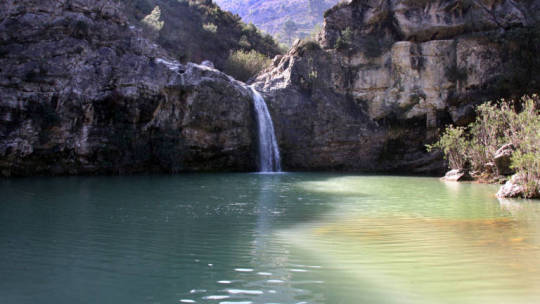
El Barranc de l'Encantada in Les Planes, Central Valencian Country. x.
In the Benidoleig cave, the legend says that two Moorish men who had stayed after the Conquest had an old book that said how to retreive the treasure. They proposed to two Christian men to go get it together, following the books instructions: they would need to go at night, when they reached the cave they would read out a magic spell, burn some herbs, and when they reached the treasure chamber throw a cat without any black hair on it.
And so they did it: at night, they entered the cave. They found an enchanted Moorish woman who asked the Moorish men "why are you bringing enemies to the treasure?" but they ignored her and continued walking in. They followed the first part of the ritual and reached a treasure chamber with mountains of gold, silver and pearls, guarded by a black man under a spell, still as a statue and armed with a mace, which he held as if he were about to strike. Scared of the statue, the men doubted, but blinded by the riches they sacrificed the cat to take the treasure. In that exact moment, the black man came to life and threw away the cat, because it did not fulfil the requisit of not having any black hair. The men were sad that they couldn't make it and turned around to leave, but one of them used the moment to put a handful of gold and pearls in his pockets.
When they arrived to the cave's entrance, it was closed and they couldn't leave. One of the Moorish men said that is because one of them must have stolen a part of the treasure, and that if they don't put it back they'll be stuck there forever. The man confessed and gave it back, and the cave's mouth opened again.
There are many similar legends where the people looking for the treasure get trapped inside because of their greed.

The Benidoleig cave, Central Valencian Country. Nowadays it can be visited. x.
The last one I'll tell is from L'Albir. This is said to have happened in a cave called mina d'Ocre.
On a rainy day, a shepherd called Pere Joan took shelter in the cave. He heard a woman's voice coming from deep inside the cave that told him "Pere Joan, I'm here inside. You're a man with a good heart, come in!". Pere Joan was scared and didn't move, but the voice repeated it three times, until he decided to go. Inside the cave, he met the encantada who thanked him for having entered and told him she was a Moorish princess under a spell: she could only leave for 3 days every 100 years, and whoever breaks the spell will be lucky forever and all of his wishes will become true.
The encantada told him how to break the spell: "tomorrow night you must bring me 3 slices of blessed bread. You'll have to hold one on each hand and the other with your mouth. But be aware that I will look like a terrible, huge and ugly snake. But don't worry, it will still be me and I won't hurt you."
The next day, Pere Joan obeyed. Holding the bread in his hands and mouth, inside the dark cave he closed his eyes out of fear. Then, he felt how something took the bread from his left hand, then the right one... And then he opened his eyes and saw, right in front of his face, the monstrous snake. He got so scared that he ran away without thinking, and as he was leaving the cave he could hear the snake turn back into the princess and shout this curse: "for not having believed me and not breaking the spell, misfortune will always follow you, wherever you go!".
And it's true: until the day he died, Pere Joan was always lonely, poor, ill and sad. And we don't know what happened to the princess, but it's most likely that she's still waiting in her cave, for the next 100th year for someone to break the spell.
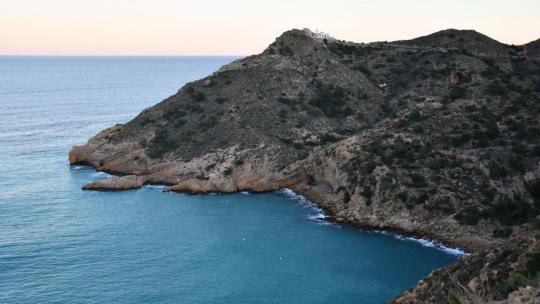
Coast of L'Albir, where the mines d'Ocre cave is located. Alacant, Valencian Country.
I used to hear a story like this when I was a child, too. I don't remember it exactly, but it was about a man who entered a cave where the encantada and the treasure were only visible in full moon nights. The encantada told him how to break the spell and leave with the treasure, but he got too greedy and didn't make it out of the cave before the moonlight rays stopped reaching the cave, so he lost it all and got trapped, if I remember right.
Once again, there are many legends of haunted places like these. And many people have firmly believed that they are real.
I hope this was interesting and answers your question. As always, everyone is welcome to add more to this post if yours is missing.
#catalunya nord#canigó#perellós#òpol#fort libèria#vilafranca de conflent#torrefocs#fort dels banys#els banys d'arles#història
116 notes
·
View notes
Photo




Best train rides in the Catalan Countries 2/7:
El Tren Groc (the Yelow Train). This train crosses 63 km (39 miles), stopping at 22 stops between the towns of Tor de Querol and Vilafranca de Conflent, in Northern Catalonia. The most characteristic landscapes of Northern Catalonia and some of its Medieval towns can be seen from the train.
The line was built between 1903 and 1910 to communicate the rural area of Alta Cerdanya with the capital city of Northern Catalonia, Perpinyà. The railway is very curvy, following the Tet river, in order to avoid crossing the France-Spain border. Since Northern Catalonia is found on the Pyrenee mountain rage, the train has to accomodate so it goes slowly and goes up and down a difference of 1,200 meters, starting at 427 metres high in Vilafranca and reaching 1593 metres in Coll de la Perxa.
Photos from formiguères.fr, Discover Pyrenees, and AAFCB
#trens dels països catalans#tren groc#catalunya nord#tor de querol#vilafranca de conflent#travel#train#trains#pyrenees#europe#yellow#rail travel
46 notes
·
View notes
Photo

Vilafranca de Conflent, Catalunya Nord
#vilafranca de conflent#conflent#catalunya nord#fotografia#pays catalan#travel#photography#mountain#architecture#church#stone building#old#ancient#travel photography
11 notes
·
View notes
Photo

Vilafranca de Conflent, Catalunya Nord. Photo by James Picht
#vilafranca de conflent#catalunya nord#fotografia#travel#pays catalan#conflent#catalunya del nord#europe#southern europe#explore#medieval#old town#travelling#photography#travel photography#beautiful places#world#europa#pyrenees#wanderlust
69 notes
·
View notes
Photo




UNESCO world heritage sites in the Catalan Countries 2/12: Fortifications of Vauban: Vilafranca de Conflent and Montlluís, Northern Catalonia
Fortifications of Vauban consists of 12 groups of fortified buildings and sites along the borders of France. They represent the finest examples of the work of Sébastien Le Prestre de Vauban (1633-1707), a military engineer of King Louis XIV. The serial property includes towns built from scratch by Vauban, citadels, urban bastion walls and bastion towers. There are also mountain forts, sea forts, a mountain battery and two mountain communication structures. This property is inscribed as bearing witness to the peak of classic fortifications, typical of western military architecture. Vauban also played a major role in the history of fortification in Europe and on other continents until the mid-19th century.
UNESCO
Two of these fortifications, Vilafranca de Conflent and Montlluís, are in Northern Catalonia.
Photo sources: 1 2 3
#unesco heritage series#vilafranca de conflent#montlluís#catalunya nord#història#fotografia#history#travel#europe#pays catalan#països catalans#vauban#europa#vauban fortifications#fortifications of vauban#unesco#17th century#conflent#montlluis#catalogne#world heritage#north catalonia#ppcc#northern catalonia#unesco world heritage site#world heriatge site#barroque#historia
18 notes
·
View notes